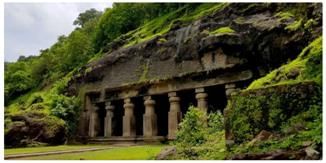Olympiad Test Level 1: Famous Historical Monuments & Art and Architecture- 2 - Class 6 MCQ
15 Questions MCQ Test - Olympiad Test Level 1: Famous Historical Monuments & Art and Architecture- 2
Elephanta cave is located near


Jantar Mantar at Delhi was built by whom in 1710?
Hawa Mahal is located in which city?


Ellora in Aurangabad (Maharashtra) is famous for ancient caves representing Buddhism, Hinduism and Jainism. Of these, the largest number pertains to ___________.
Ajanta-Ellora caves are situated near

Who is the founder of Sun Temple in Orissa?
Where is the Chittorgarh fort located?
The Taj Mahal is the grandest architectural accomplishment of the reign of ________.
National Gallery of Modern art is in ______.
The art of painting reached its climax during the period of which emperor of Medieval India?
Name the monuments which was built by Mughal emperor Akbar?
A famous monument built by Muhammad Quli Qutab Shah in 1951 was
Taj Mahal is built on bank of which river?

“Alai Darwaja” is a gateway to which monument?
Name the city where Amba Vilas Palace, one of the most popular attractions and a historical palace is situated?



















